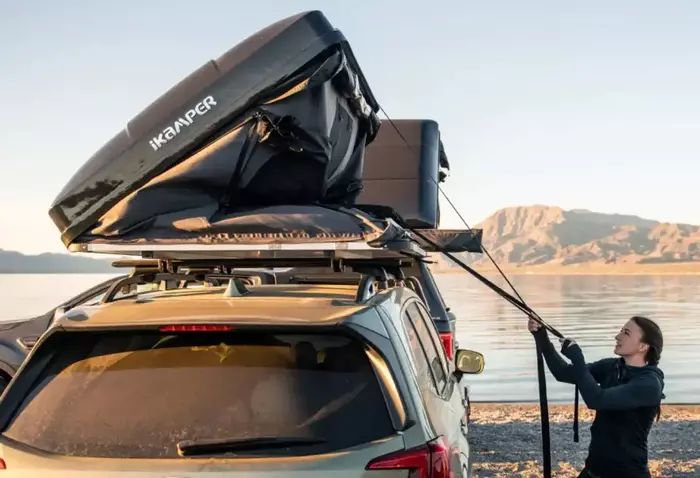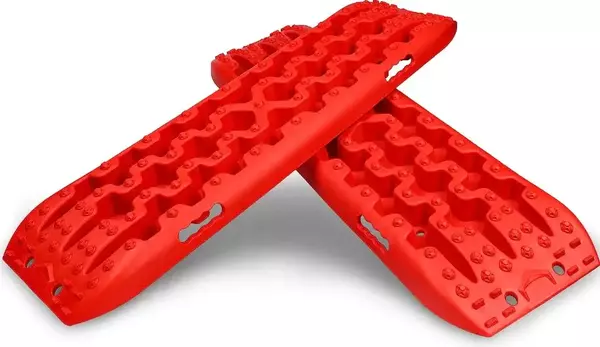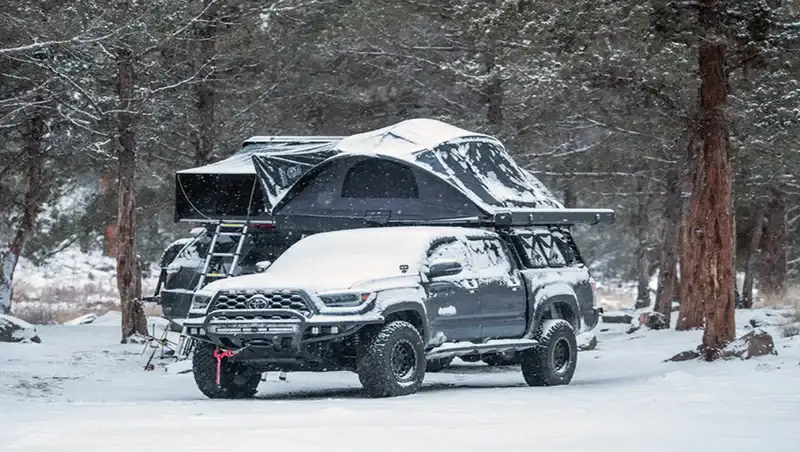In this text I explore the question of whether rooftop tents can be used on any type of terrain. For this, I examine the different types of terrains and the compatibility of rooftop tents with each of them.
Roof top tents are used on vehicles, so when you discuss types of terrains, this has far more to do with the vehicle than with the tent itself.
In general, one can speak about soft terrains (beaches, snow, and mud) and hard terrains (rock, gravel, and concrete). Here I describe some limitations and mention precautions that should be taken into account when you find yourself on such different terrains. You might need some accessories for such situations.
Roof top tents have been around for decades, but they have been becoming increasingly popular in the past a couple of years. Such a shelter is mounted on the roof of a vehicle, and this implies mobility and changing places frequently.
In the process, you can find yourself on a variety of terrains. So let’s see what you can expect and how to behave.
Soft terrains
Quite generally, this may include the following three types: beaches, snow, and mud. When you drive on such a ground, this may require special equipment or gear to navigate, and when you set the camp, the ground may not be stable.
Beaches
There are two aspects to consider, physical conditions, and rules for camping.
Regarding physical conditions, you have a car and the roof top tent on it, and your ladder is in place. On a soft ground, the ladder will not be stable and it can sink a bit.
If you have an expandable roof top tent, then the ladder doubles as a support for half of its platform. The iKamper Skycamp 3.0 Mini in the picture is one of that type.

So if the ladder sinks in the ground when you are on the platform, the hinges that connect two halves of the platform can get damaged. This can make your expensive rooftop tent useless.
This is why it is important to provide a solid base for the ladder. It is up to you what to use, but I am sure that some of traction mats can be useful for such a purpose.
Additionally, you might need sand anchors, sand mats, and guylines to help stabilize both the vehicle and the tent.
Regarding rules, there may be specific rules and regulations for the beach which you are just visiting. So better to get informed than to suffer penalties.
Snow
In my separate text I have discussed the issue of rooftop tents in different weather conditions. So these shelters can indeed be used year round, and they can protect you from the cold better than most of ground winter tents.
I have also discussed the issue of accumulating snow on the roof top tent, and here again, they are better than most of ground winter tents. The top picture above shows one great example in snow conditions, the iKamper X-Cover 2.0 soft shell roof top tent.
Roof top tents can be insulated, or you can buy an accessory insulating cocoon as discussed in my post about insulated rooftop tents.
But this is also about the car used on a terrain covered by snow. Here, all the usual rules and gear apply, there is nothing special or extra due to the fact that your vehicle has a roof top tent on it.
Mud
Mud means a mess, and this is both for the vehicle and for you when it is time to go bed. Luckily, most roof top tents come with boot bags where you can store your muddy boots. So if you do not have it, you can order it separately, some brands offer such things as accessories.
Regarding vehicle, there may be tricky passages on a muddy terrain. In such situations, it is good to have tire traction mats at hand. Such items are built so that you can use them on a variety of surfaces. These X-BULL New Recovery Traction Tracks Sand Mud Snow Track Tire Ladder 4WD are one example.

When you set the camp, it is important to find a leveled spot, and also to ensure a stable ground for the vehicle and for the ladder.
Hard terrains
As you can imagine, this is about surfaces that are either solid or hard. This may include rock, gravel, concrete, and also a frozen ground. These are normally the best surfaces for camping but even here you may have some challenges.
Rock
If you are able to find a leveled surface, you will likely have a great experience. But this is not guaranteed, so it is good to have levelers. If you happen to have a motorhome and you have them already, then you can use the same for this.
Otherwise, such accessories can be ordered separately. There are plenty of options on Amazon, just follow this link for levelers for RV campers.
A separate problem may appear if you have to stake the rooftop tent to the ground. A rock surface can be difficult to deal with.
Gravel
Gravel is a quite common camping surface, and unless it is very compacted, it is physically somewhere in between a hard and a soft surface. So you might face problems of both types.
I would say that with such a surface the most serious could be the issue of ladder stability. This is why you might want to move the vehicle at a place where the ground is compact and hard so that ladder does not sink.

Concrete
I guess this is a very convenient surface for camping, this helps in maintaining the space around the car and inside the tent clean. Normally, such a surface is always flat so you do not have leveling issues, and ladder remains stable on the ground.
The only problem you might have on such a terrain is if you have to use stakes and guylines. It is practically impossible to anchor them securely to such a surface. To solve this issue, you might try some of suction cups that are available on the market.
Final thoughts
In conclusion, the question of whether a rooftop tent can be used on any type of terrain depends also on the compatibility of the vehicle with the terrain. So this is about both, the vehicle and the rooftop tent. The issues related to the rooftop tents are mainly about the ladder and about guylines and stakes.
Each type of terrain may require some special equipment and accessories. I mentioned them in the text above. Ultimately, this will depend on your experience and comfort level.
But the point is that with the proper equipment and precautions, rooftop tents can indeed be used on a variety of terrains, for a unique and enjoyable camping experience.
Let me know if you have questions, there is a comment box below. You might want to read also my text about rooftop and ground tents warmth and protection from the cold.
Bookmark this site and keep as a references, you will always have new texts added here. Thank you for reading and have a nice day.

 Hi, I am Jovo, the founder of this Off-Ground Tents site and several other outdoor sites. I have been mountaineering for almost 40 years already, and I have created this site to use as a reference for various types of above ground tents.
Hi, I am Jovo, the founder of this Off-Ground Tents site and several other outdoor sites. I have been mountaineering for almost 40 years already, and I have created this site to use as a reference for various types of above ground tents.